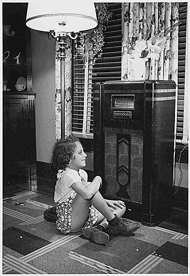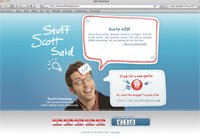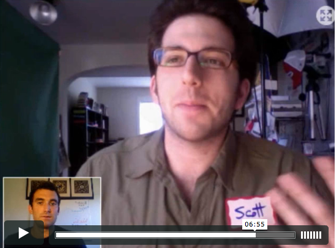 It’s not that hard to make people happy.
It’s not that hard to make people happy.
All you have to do is treat them like people.
Not as objects.
Not as integers.
Not as trophies.
Not as machines.
Not as categories.
Not as dollar signs.
Not as commodities.
Not as abstract entities.
Not as a means to an end.
Not as bloodless statistical entities.
Not as impersonal facets of production.
As people.
And I know what you’re thinking:
Do we really need an article to tell us how to treat people like people?
Yes. Yes we do.
Here’s a collection of ideas to help you, your brand and your organization do just that:1. Honor the audience of one. Stop disrespectfully dividing your attention between the person in front of you and the people you’re giving snippets of your digital attention to. You’re sacrificing sincere conversations that count for superficial connections that merely add up.
Instead, here’s a revolutionary suggestion: When you’re with people – really be with people. Make them feel like the only person in the room. Hell, make them feel like the only person in the world. Make sure that what you’re doing – right now – isn’t telling this person that there’s someone else you’d rather be interacting with.
Do you really think they don’t see you checking your smartphone under the table? Come on. People need people in their life who can be bigger than that. Have some respect for your audience of one. Don’t allow the convenience of being connected to tear apart the traditional social fabric.
And remember: Just because you’re instantly connected to the masses doesn’t mean you’re intimately connected to the people who matter. What do people get when they get you?
2. Expose your nakedness as a person. The world is a mirror. However you act is a permission slip for others to do the same. For example, those who choose to be open invite others around them to be open. But those who choose to keep their truth close to their chest signal others around them to shut down.
The question is whether you’re willing to reach out and risk living with both arms. Whether you’re courageous and rare enough to occupy your vulnerability in a space of mutual openness. Unfortunately, it takes time and courage become comfortable with that level of emotional honesty.
John Powell’s groundbreaking work on identity and self-disclosure explains why: “I am afraid to tell you who I am because if I tell you who I am, you may not like who I am – and that’s all I have.”
My suggestion: Risk it anyway. Show people who you are and, more importantly, why you are. What is forcing you to live in a way that is untrue to who you are?
3. Surrender your role. In a recent issue of BusinessWeek, Keith Ayers, President of Sydney’s Integro Leadership Institute, explained that when we get into playing roles, we stop being real.
“If I believe I have to act like a manager, then I focus on myself, my roles, what I’m doing and what I’m saying – instead of focusing on the person I am with. This diminishes trust with employees and decreases their engagement, commitment, and productivity.”
We see evidence of this is trend everywhere: Customer service agents start puking their scripts over the phone before listening to your actual problem. Salespeople dive into obvious closing techniques before you’re ready to buy. And parents treat you like a child long after you’ve become an adult.
The secret is to interact with people as a person – not as a role. To put values before vocation, individuality before industry and person before position. Then, as Ayers says, when you see yourself as a person dealing with another person, no matter what your roles, you can focus on the needs of others and on creating value. What unnecessary title is preventing people from getting to know the real you?
4. Shed your armor. In Creating True Prosperity, Shakti Gawain writes that vulnerability means allowing yourself to be affected by the word around you. This is a terrifying prospect for many leaders because you’re risking your truth. You’re risking being rejected. And you’re risking being stared at or talked about.
But here’s the secret: The more often you stick yourself out there, the more comfortable and confident you become with who you are. And when you’re comfortable and confident with whom you are, your truthful self-expression inspires and gives other people permission to do and be the same.
And that’s when we begin to listen to each other from a truer place, share with each other from a stronger place and communicate with each other from a more genuine place.
Ultimately, you display your love for people by letting those people get to know you. Thus, being vulnerable is a gift that you give to others. And by recognizing and sharing your own truth, you inspire them to do the same. Doesn’t get more personal than that. How much longer do you want to deprive yourself of breaking out in order to protect others from who you really are?
5. Encourage and celebrate their mistakes. When I was a kid, my favorite song from Sesame Street was, “Everybody Makes Mistakes.” It goes like this:
“If you make a mistake, you shouldn’t start to cry. Mistakes are not so bad, and here’s why. Everyone makes mistakes, oh yes they do. Your sister and your brother and your dad and mother too. Big people, small people, matter of fact, all people. And if everyone in the whole wide world makes mistakes, then why can’t you?”
Look: Human beings are naturally infallible creatures. They screw up every day. But they still need reminders that making a mistake isn’t the same as being a mistake.
Next time people you care about bite the big one, help them release their identification with the flub. Remind them that the moment you learn from a mistake is the moment it ceases to be a mistake. And tell them that while failure is an option – not learning form that failure isn’t. What language do you use with people when they fall short?
6. Meet the now need. People want to be heard first and helped second. Always honor this priority. If you treat people’s ideas as inconvenient interruptions to your uninspiring monologues, you lose them forever. If you only listen to people to use their comments as backboards against which you can try out your snappy new stand-up material, you lose them forever.
And, if you over empathize by interrupting people’s stories to share (yet another) selfish, inconsequential diatribe, you lose them forever.
Stop circling back to remind people how vastly experienced you are at their reality. Instead, try listening to people and not just to your improvements for them. Choose to hear the whole person.
Develop a vocabulary for the personal by speaking with humanizing language, not perfect phrases you were forced to memorize from your employee empathy class. Their now need is what matters the most. Meet it. Why are you listening?
7. Indulge in your humanity. I’ve been wearing a nametag twenty-four seven for the past decade. What can I say? Some people wear their heart on their sleeve – I wear my humanity on my chest. And I’ve learned that (contrary to popular conditioning) vulnerability isn’t surrender.
Here’s the reality: The more vulnerable you are, the more open you are. The more open you are, the less you have to hide. The less you have to hide, the more relaxed you become. And the more relaxed you become, the more effectively you can treat people like people. Simple – but not easy.
My suggestion: Instead of making endless plans to reduce unpredictability, mitigate risk and preserve your sense of control, try surrendering. Learn to treat your vulnerability as an advantage. And remember the words Henry James: “To be opened to risk is to risk being shattered. But without shattering, there is no glory.”
Remember: You can’t cram everything into a process. Let improvisation pull the rug out from under the rigidity of the predictable. What do you need to surrender to?
Anyway, that’s my vision for the future.
A church where you’re not a butt in a seat – you’re a person.
A retail store where you’re not a walking wallet – you’re a person.
A dentist’s office where you’re not a mouth with teeth – you’re a person.
A grocery store where you’re not another inventory picker – you’re a person.
A bank where you’re not an account number on a spreadsheet – you’re a person.
A hospital where you’re not a collection of symptoms on a chart – you’re a person.
A networking event where you’re not just a pit stop in people’s lives – you’re a person.
A hair salon where you’re not another name in the appointment book – you’re a person.
IN SHORT: A world where people are treated like people.
I know it’s a lot to ask.
I know it’s hard to be human. Especially when so much inhumanity surrounds us.
But.
When you treat people like people, they don’t just listen to you – they work their hearts out for you.
And they come back over and over again.
LET ME ASK YA THIS…
What do you see when you see people?
LET ME SUGGEST THIS…
For the list called, “10 Unmistakable Motivators of Human Engagement,” send an email to me, and you win the list for free!
* * * *
Scott Ginsberg
That Guy with the Nametag
Author, Speaker, Entrepreneur, Mentor
[email protected]
Now booking for 2011!
Watch The Nametag Guy in action here!


 You can only talk to yourself for so long.
You can only talk to yourself for so long. The world’s FIRST two-in-one, flip-flop book!
The world’s FIRST two-in-one, flip-flop book! To court is “to woo and pay homage.”
To court is “to woo and pay homage.” The world’s FIRST two-in-one, flip-flop book!
The world’s FIRST two-in-one, flip-flop book! Satisfaction is useless and loyalty is overrated.
Satisfaction is useless and loyalty is overrated.  Rarity is inherent.
Rarity is inherent.  If you don’t want people quitting you, you’ve got to figure out how to make love stay.
If you don’t want people quitting you, you’ve got to figure out how to make love stay. Most people don’t realize how brilliant they are.
Most people don’t realize how brilliant they are.  The world’s FIRST two-in-one, flip-flop book!
The world’s FIRST two-in-one, flip-flop book! Three hundred billion dollars.
Three hundred billion dollars. Everyone is old to someone.
Everyone is old to someone. Who’s quoting YOU?
Who’s quoting YOU? My friend Sean Gallagher at
My friend Sean Gallagher at  The world’s FIRST two-in-one, flip-flop book!
The world’s FIRST two-in-one, flip-flop book!